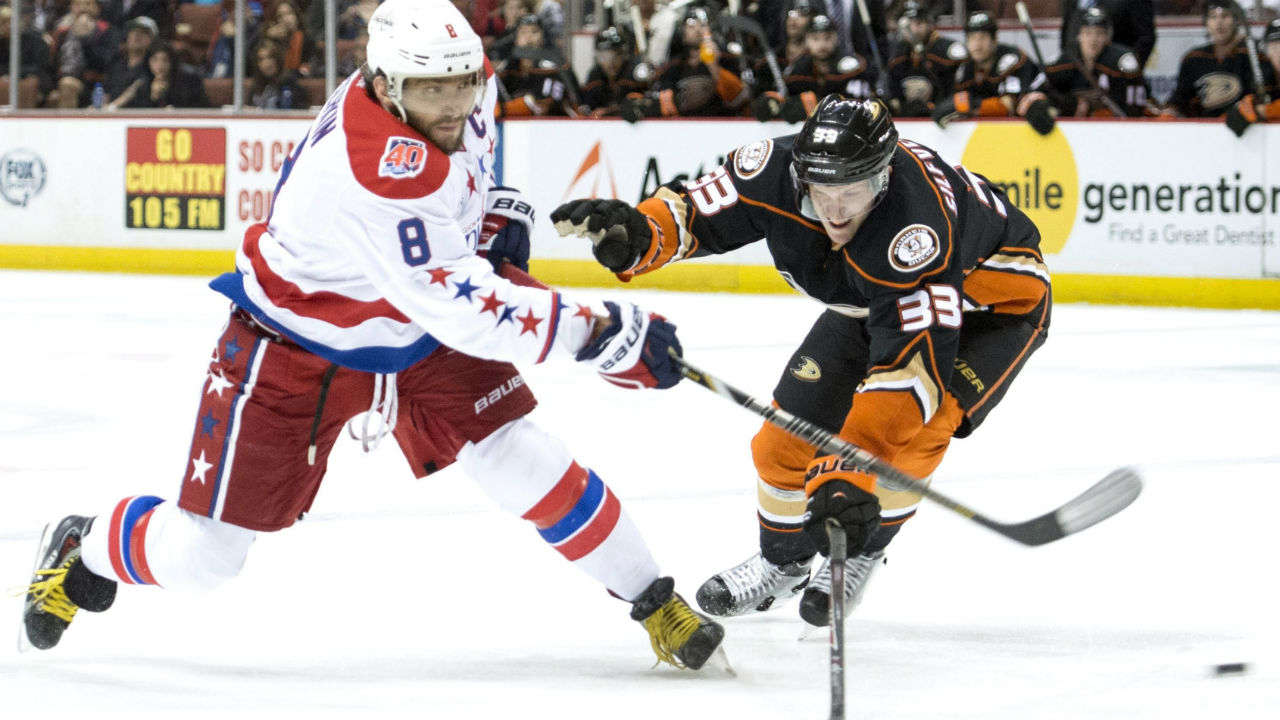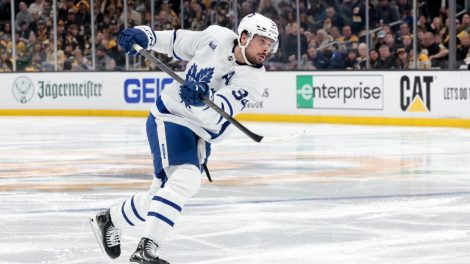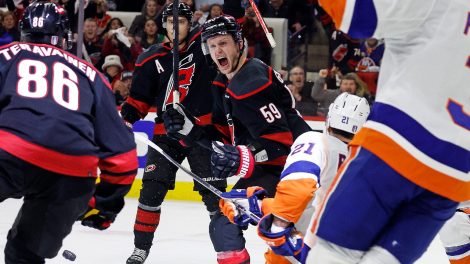It was either Shakespeare who wrote, or LMFAO and Lil’ Jon who sang, these sage words: “Shots shots shots shots shots shots! Shots shots shots shots shots! Shots shots shots shots shots!”
Here’s a look at the five common shots we see in hockey, the players who have mastered them and what you need to do to use them effectively.
Wrist shot – Alex Ovechkin
No player has more goals than Ovie since the dynamic Russian broke into the league in 2005. In fact, no player is even within 150 goals of the Great 8 and a high percentage of Ovechkin’s are buried via the wrist shot.
The wrist shot is the most accurate shot in hockey and typically the first one taught to children when they begin to play. It relies mostly on wrist and arm strength. The player cradles the puck with the blade of the stick, drags the puck from the back leg to the front leg while pressing down on the stick to create a bend in the shaft, then flicks the wrists to propel the puck to the net. The blade of the stick doesn’t leave the ice until you release the puck and the toe should point in the direction you want it to go.
Backhand – Sidney Crosby
The Pittsburgh Penguins captain has been the consensus best player in the world for roughly a decade. He sees the game as well as anyone, racks up points as well as anyone and can wire home backhands as well as anyone.
The power and accuracy Crosby can generate on his backhands is remarkable. Backhands are often difficult for goalies to track because it’s tough to predict when the puck will come off the blade of the stick. The mechanics of a backhand are essentially the opposite of a forehand shot. The curve of a player’s stick can impact how easily and accurately they get a backhand off. Crosby’s stick has a minimal curve, which allows him to get more power and lift on his backhands.
Slap shot – Shea Weber
If you see the Nashville Predators captain winding up for a slap shot, do yourself a favour and get out of the way. Weber’s clapper has broken legs, gone through boards and nets, and gives opposing skaters and goalies nightmares. Weber is the reigning hardest shot winner at the NHL All-Star Game.
Unlike a wrist shot, a good slap shot requires a player’s entire body (like when a boxer throws a power punch) as kinetic energy is transferred from the body, through the stick and to the puck. A player winds up, raising the blade of the stick above the waistline then swings the stick down towards the puck while shifting weight from your back leg to your front leg. The blade of the stick should contact the ice several inches before it hits the puck, causing the stick to flex, which adds velocity to the shot.
Snap shot – Vladimir Tarasenko
Tarasenko has developed into one of the NHL’s elite goal scorers over the past few seasons. He can dangle through an entire team, using speed and finesse to bury the puck, but many of his goals come from his excellent snap shot.
The key to a quality snap shot is having a quick release. The blade of your stick should remain on or low to the ice, but it’s not in contact with the puck the entire time like it is during a wrist shot. While you’re typically perpendicular to your target during a wrist shot, your chest should face your target during a snap shot. Lean into the shot, putting weight on the leg closest to the puck as well as your stick. Quickly pull the butt end of your stick back while simultaneously pushing your bottom hand forward, turning over your wrists upon release. There is little to no wind-up on a snap shot.
One timer – Steven Stamkos
When the Tampa Bay Lightning are on the power play, opposing teams know exactly where Stamkos is going to be and exactly what the Lightning are trying to do. The sniper is going to be at the top of the circle on his off-wing, ready to wire a one-timer home once he gets a good pass from a teammate.
Players can either take a slap shot or snap shot on a one-timer, the mechanics of each are described above. One-timers are all about timing, adjusting your body and hand-eye coordination.










